Tesla Model 3 vs Tesla Model Y: Which electric car is right for you?
Should you choose a Tesla's sedan or a compact SUV?
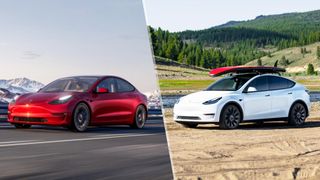
The Tesla Model 3 and Model Y still two of the major players in the EV market — despite the growing competition and a slowdown in Tesla sales. They're not priced like entry-level EVs by any stretch, but hasn't stopped them from becoming the two most popular electric cars in the United States.
Tesla are designed to offer a feeling of luxury, even in its cheapest models. For Model 3 and Model Y owners, it means an upscale driving atmosphere that doesn't have a six-figure price tag. Sure, neither of these cars are as flashy or advanced as the Model S or Model X, but you still get a lot for your money.
Deciding between the two can be a little difficult, though, and whether you want long range, performance, or a luxury-feeling interior, the Model 3 and Model Y have something to offer. But as similar as both cars are, there are just as many key differences that will make your job easier — least of all the price. So when it's a case of Tesla Model 3 vs Tesla Model Y, which car is right for you?
Tesla Model 3 vs Tesla Model Y: Specs
| Header Cell - Column 0 | Tesla Model 3 | Tesla Model Y |
|---|---|---|
| Price | From $42,490 | From $44,990 |
| Range | 341 miles | 337 miles |
| Charging | 250kW | 250kW |
| Top Speed | 163 mph | 155mph |
| 0-60mph | 209 seconds | 3.5 seconds |
| Extra features | Autopilot, Sentry mode, App control, wireless charger, tinted glass roof | Autopilot, Sentry mode, App control, wireless charger, flat folding seats, tinted glass roof |
Tesla Model 3 vs Tesla Model Y: Price
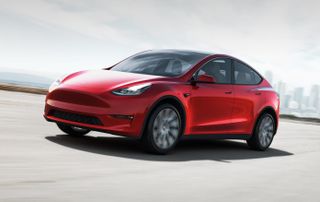
The Tesla Model 3 is the cheapest car in Tesla’s portfolio, despite all the price increase. It did look like the single-motor Cybertruck might have usurped its position, but with news the electric truck will be more expensive than originally promised the title of "cheapest Tesla" falls back to the RWD Model 3.
The latest price changes means the RWD Tesla Model 3 now starts at $42,490. That's the entry-level model with rear-wheel drive that doesn't offer quite as much performance or driving distance as other models.
On top of that you also have a all wheel drive long range model with rear-wheel drive starting at $42,490 and an all-wheel drive Long Range model from $47,490. A high-speed Performance model starts at $54,990.
The Model Y is a little bit more expensive. The rear wheel drive long range model costs $44,990, while the all wheel drive model jumps up to $47,990. The Performance model costs $51,490.
Sign up to get the BEST of Tom's Guide direct to your inbox.
Here at Tom’s Guide our expert editors are committed to bringing you the best news, reviews and guides to help you stay informed and ahead of the curve!
Tesla Model 3 vs Tesla Model Y: Design and interior
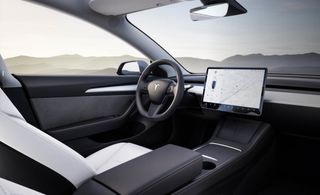
The Tesla Model 3 is a sedan, while the Model Y is a hatchback SUV. Naturally that comes with a few differences in the overall look of the car and what you get on the inside.
Being a sedan means the Model 3 has a much sleeker and sportier profile than the Model Y. It’s closer to the ground, and has a much flatter hood. However, that design comes with some drawbacks, as you’ll only find 15 cubic feet of rear trunk space.
The Model Y comes with 36 cubic feet, on account of the noticeably larger SUV design. It’s two inches longer and wider than the Model 3, as a whopping seven inches taller. While you can squeeze five people into a Model 3, the Model Y’s spacious interior means they’re going to be a lot more comfortable on long drives.
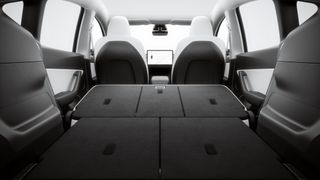
You also have the option for a third row in the AWD Long Range Model Y, which means you can get seven people in there for an extra $2,000. The Model Y also has an optional tow hitch, which the Model 3 lacks, though it will cost you an extra $1,000
As for the rest of the design, there isn’t much more to differentiate the two EVs. The dash is nearly identical, and you'll get the same glass roof, 15-inch touchscreen control panel, wireless charger, cup holders, power-adjustable seats and vegan-friendly “softer than leather” interior.
Tesla Model 3 vs Tesla Model Y: Power & Performance
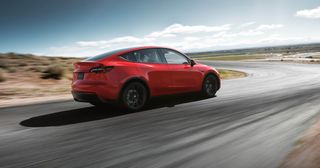
The power you get with the Tesla Model 3 all depends on which version of the car you purchase. All of them pack in two motors, but the cheapest model only comes with rear-wheel drive. Long Range and Performance models come with all wheel drive, and that offers a little bit more oomph.
So the RWD Model 3 will go from 0-60 in 4.9 seconds, and has a top speed of 125mph. RWD and AWD Long Range model reaches 60mph in 4.2 seconds and has the same 125mph top speed. The Performance manage to get to 60mph in 2.9 seconds with a top speed of 163mph.
The Model Y isn’t quite as good in this respect. Its acceleration and top speed are lower than the equivalent Model 3. The RWD Long Range manages 0-60 in 6.5 seconds, while the AWD model does it in 4.8 seconds. The Performance model has them both beat with a 3.5 second time. Both long range models have a 135mph top speed, while the Performance model tops out at 155 mph.
The Model Y is only a fraction of a second slower than Model 3, and chances are you won’t even get close to that top speed on a public road. But for those obsessed with the highest numbers, or who want to take part in some drag racing, the Model 3 has the edge.
Tesla Model 3 vs Tesla Model Y: Battery and range
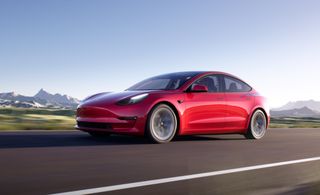
Once again the range you can expect is all dependent on which model of car you purchase. And there’s a very obvious correlation with bigger batteries making your car last longer.
If you pick up a RWD Model 3, you can expect to get 363 miles out of the battery. The AWD Long Range model hits 341 miles of range, and the Performance variant offers 303 miles.
The Tesla Model Y can offer 337 miles with the rear wheel drive long range model, 308 from the all wheel drive model and 277 miles out of the Performance model. That’s the sacrifice you have to make for having room to put more stuff (and people) inside your car.
So if you want to maximize range, the Model 3 is the car to pick.
Tesla Model 3 vs Tesla Model Y: Autopilot and other tech
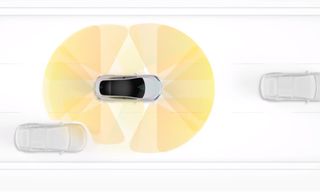
In terms of special features, both cars have the standard Tesla suite. That includes basic Autopilot, that comes with basic autonomous steering, acceleration and braking, lane assist, collision warnings and blind-spot alarms.
The “Full Self-Driving package” is also available on both for cars, either as a one time purchase of $8,000. It's worth reminding people that this isn’t complete Level 5 autonomous driving. Instead this lets you navigate on freeways, change lanes automatically, automatically park, a summon option, as well as light and stop sign recognition.
FSD offers features like Navigate on Autopilot (for highways), auto-lane change, Autopark, Summon and Smart Summon. However it's not likely to get upgrades as readily as FSD, and isn't eligible to take part in the FSD beta. The feature suite on both cars is identical.
Both cars also come with a sentry mode that monitors the surrounding area when the car is unattended, a glass roof shielded from UV and infra-red light, over the air updates and mobile app support. Inside they have the same 15-inch touchscreen control panel, a wireless charging pad, and “advanced climate control”.
That last one is Tesla's fancy HVAC control system, which lets you control what air flows where by dragging simulated air flow across a touchscreen — which you can see below.
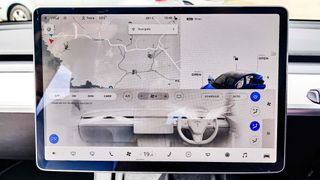
All car models get complimentary access to Tesla’s Standard Connectivity, which offers simple navigation, for eight years.
If you want data-heavy features, such as live traffic visualizations, satellite-view maps, video and music streaming, you'll need to subscribe to Premium Connectivity. That will cost $10, or $99 a year, a month — no matter which car you have. Neither car supports Android Auto or Apple CarPlay.
Tesla Model 3 vs Tesla Model Y: Outlook
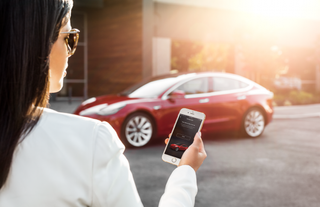
Which Tesla you buy is completely dependent on what you want to get out of your car. The Model 3 easily wins on both range and performance, if you’re only looking at the numbers. But you have to sacrifice interior space as a result.
The Model Y isn’t far behind in terms of both range and power, though the benefit of owning one is that you can fit a lot more stuff inside. You can still hold a lot in the Model 3’s trunk, but you might want to be mindful of its limitations before you try and fill it with Ikea furniture — even with the back seats folded down.
But the reality is that both cars are very similar. The price difference between comparable models isn’t huge, and honestly, both are going to look very similar to the untrained eye. When it comes down to it, it all just depends on what you need your car for.
Families and other people who can take advantage of the size of an SUV will want the Model Y. If you want a Tesla on the cheap, or you want to maximize the amount of range or power your car has, then the Model 3 is for you. There’s no wrong answer, and you’ll get a pretty similar Tesla experience regardless of choice.

Tom is the Tom's Guide's UK Phones Editor, tackling the latest smartphone news and vocally expressing his opinions about upcoming features or changes. It's long way from his days as editor of Gizmodo UK, when pretty much everything was on the table. He’s usually found trying to squeeze another giant Lego set onto the shelf, draining very large cups of coffee, or complaining about how terrible his Smart TV is.
-
Willemvd “Both the Model 3 and Model Y included Tesla's Full Self Driving Computer 3.0 from day one.”Reply
Wrong. Hardware 3.0 was introduced mid production of the model 3. The first model 3 was produced in July 2017. Hardware 3.0 was added in March 2019. So there are a lot of Model 3 cars for which an upgrade is necessary parallel tot Model X and S to enable FSD.